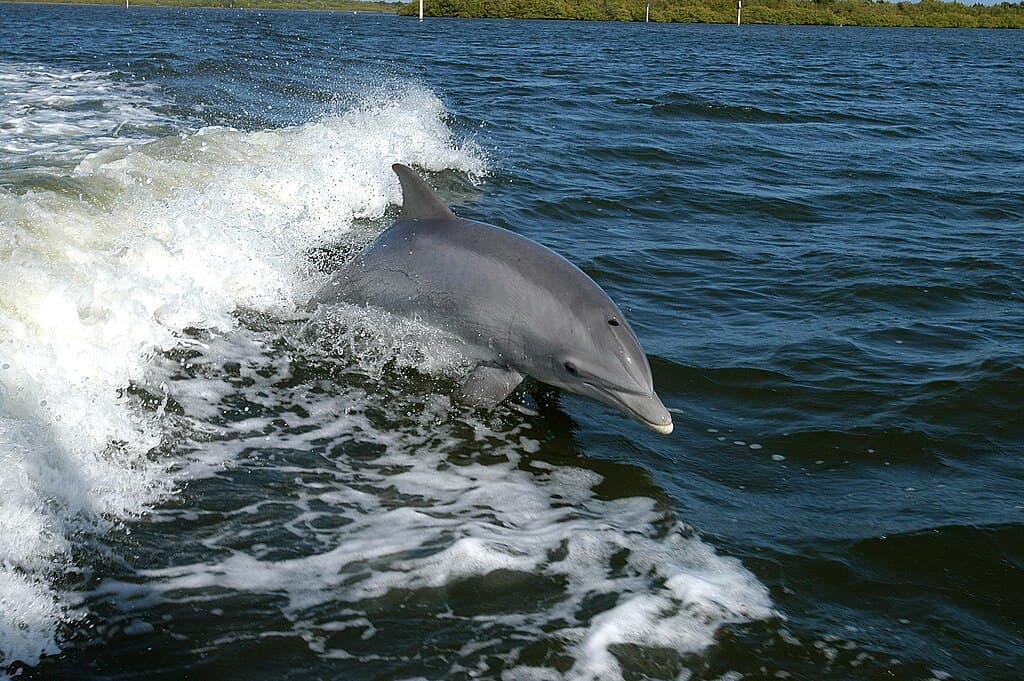Dolphins, those charismatic marine mammals, have captivated humans for centuries with their intelligence, social complexity, and seemingly playful demeanor. Far from being simple sea creatures, dolphins exhibit a rich tapestry of behaviors that reflect their cognitive abilities, evolutionary adaptations, and social structures. Marine biologists who spend their careers studying these remarkable animals have uncovered fascinating explanations for dolphin behaviors that might appear mysterious to casual observers. From their cooperative hunting techniques to their complex communication systems, dolphins demonstrate behaviors that rival those of primates in sophistication. In this comprehensive exploration, we’ll dive into thirteen distinctive dolphin behaviors that marine biologists have studied and explained, revealing the intricate world of these ocean ambassadors and the science behind their actions.
12. Echolocation Nature’s Sonar System
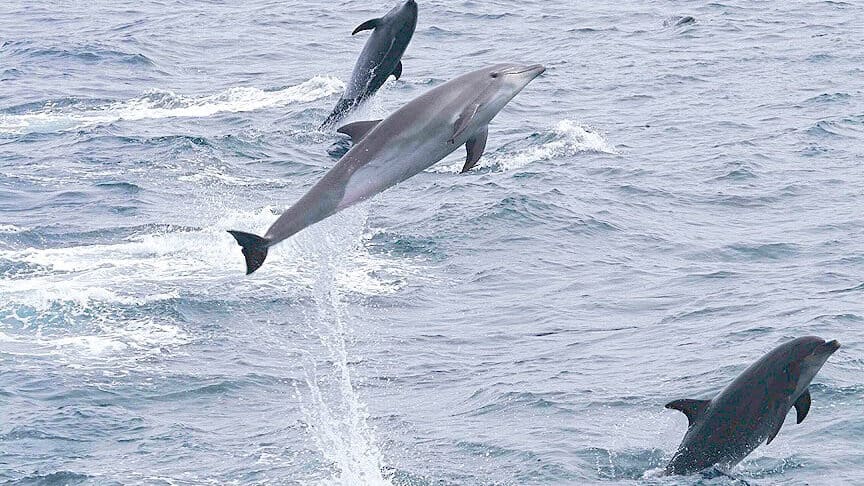
Perhaps the most remarkable ability in the dolphin’s behavioral repertoire is echolocation, often described as nature’s most sophisticated sonar system. Dolphins produce high-frequency clicks that travel through water and bounce off objects, returning echoes that the animals process to create detailed mental “images” of their surroundings. Marine biologists have determined that dolphins can detect objects as small as a marble from nearly 230 feet away and can distinguish between objects of different densities, shapes, and materials, even when visually identical.
The precision of dolphin echolocation exceeds human-made sonar technology in many respects. Studies conducted at the Naval Undersea Warfare Center demonstrated that dolphins can detect differences between similar metal objects buried under several inches of mud—a feat impossible for artificial sonar systems. This behavior evolved as an adaptation to hunting in murky waters and navigating at night, allowing dolphins to thrive in environments where visual perception alone would be insufficient. The melon, a fatty organ in the dolphin’s forehead, focuses these sound beams like an acoustic lens, while specialized areas in their jaws and inner ears receive the returning echoes.
11. Bubble Ring Play Demonstrating Intelligence Through Recreation
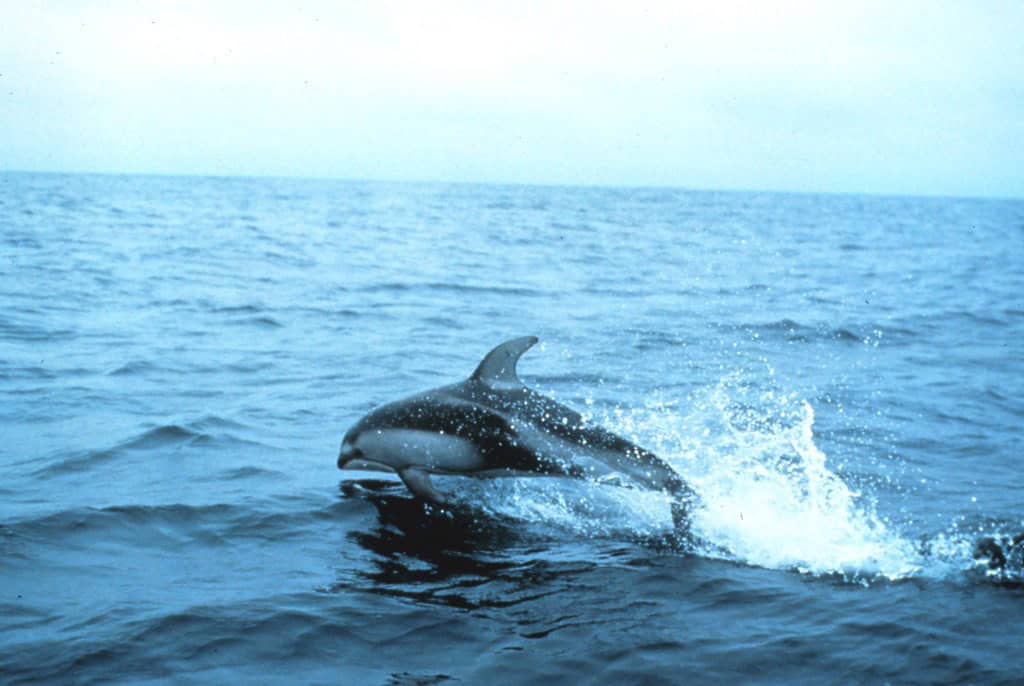
One of the most mesmerizing dolphin behaviors is their creation and manipulation of bubble rings, which marine biologists consider strong evidence of both intelligence and playfulness. Dolphins create perfect toroidal air rings by releasing air from their blowholes in a specific manner, then manipulate these rings by creating secondary water vortices that move the bubbles in predictable ways. Dr. Stan Kuczaj, who studied dolphin cognition for over three decades, documented captive dolphins teaching this behavior to others and developing increasingly complex bubble manipulations over time.
What makes this behavior particularly significant is that it serves no obvious survival function—it appears to be purely recreational. Observations show dolphins will spend considerable time perfecting their bubble ring techniques, demonstrating persistence, planning, and creativity. Young dolphins often watch adults create rings before attempting the behavior themselves, showing observational learning capabilities. Some dolphins have even been observed creating multiple rings that interact with each other in planned ways, suggesting an understanding of fluid dynamics that would impress physicists. This recreational behavior showcases the dolphin’s capacity for innovation and their enjoyment of mental stimulation.
10. Synchronized Swimming Social Bonding Through Movement
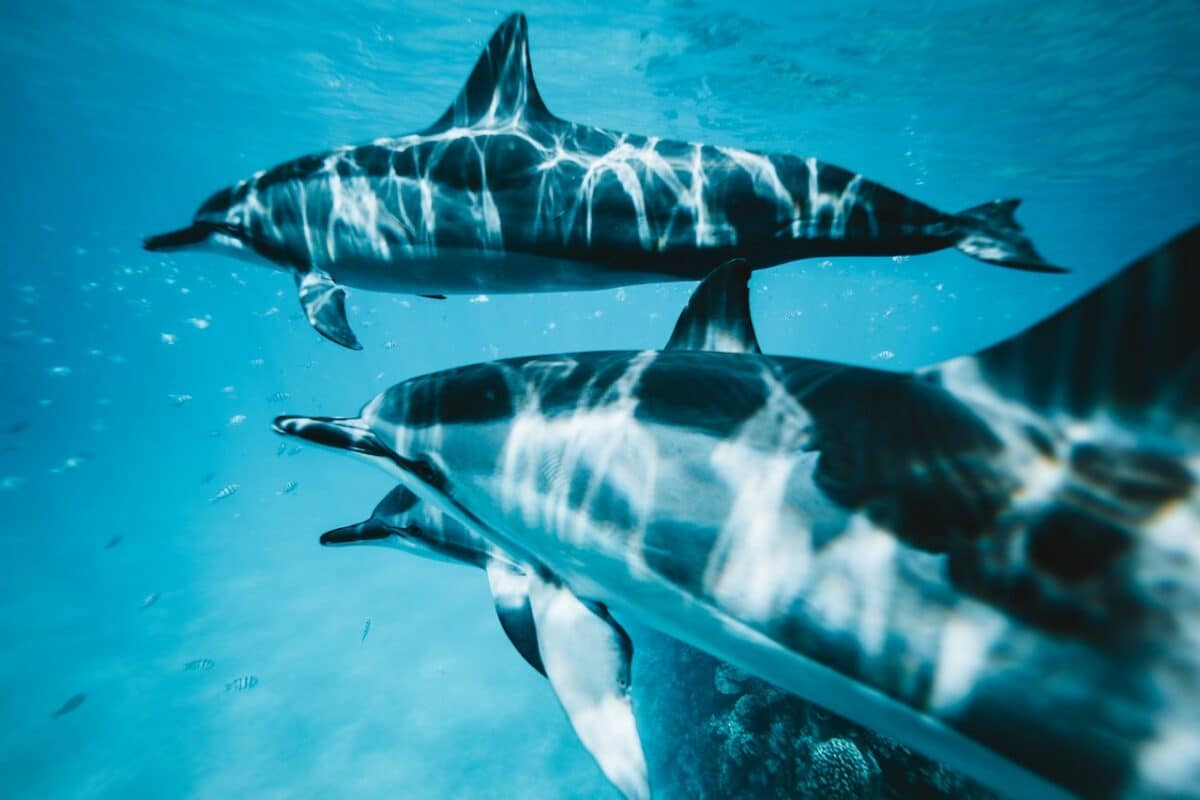
The remarkable synchronicity with which dolphins swim together is not merely coincidental but serves important social functions within dolphin pods. Marine biologists have documented that dolphins—particularly mother-calf pairs and male alliance groups—often swim in perfect synchrony, matching their movements, speed, and even their breathing patterns. Dr. Denise Herzing, who has studied Atlantic spotted dolphins for over 35 years, found that this synchronized swimming strengthens social bonds and demonstrates alliance solidarity, particularly among male dolphins who form complex social partnerships.
Research published in the journal Animal Behaviour revealed that dolphins who engage in more synchronized swimming show higher levels of oxytocin—often called the “bonding hormone”—suggesting a physiological basis for this behavior’s role in social cohesion. Synchronization also serves practical purposes: mothers and calves who swim in a synchronized pattern benefit from hydrodynamic efficiency, reducing the calf’s energy expenditure by allowing it to “slip-stream” in its mother’s wake. Among hunting groups, synchronized movements enable coordinated prey encirclement strategies. This multi-purpose behavior demonstrates how dolphins have evolved behaviors that simultaneously serve social, energetic, and practical functions in their marine environment.
9. Tool Use Sponges as Hunting Implements
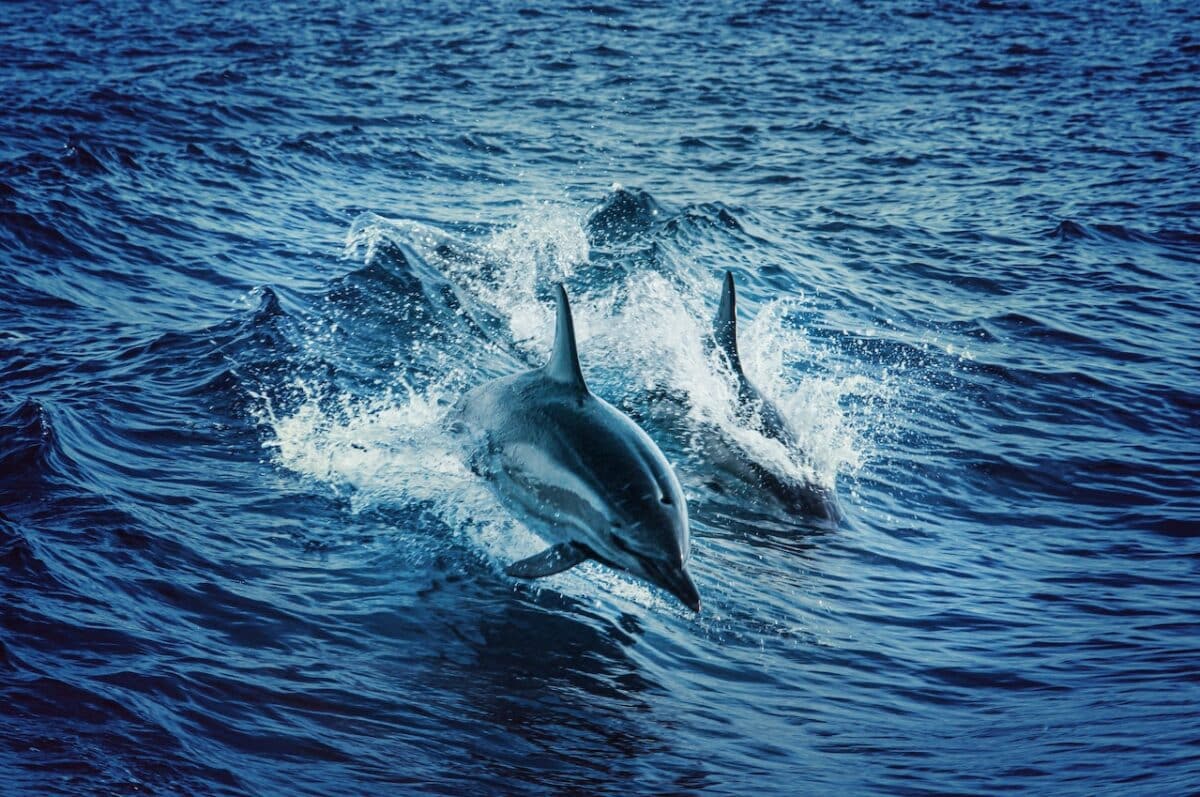
The discovery of tool use among bottlenose dolphins in Shark Bay, Australia, revolutionized our understanding of marine mammal intelligence. These dolphins, nicknamed “spongers,” have been observed breaking marine sponges from the seafloor and wearing them over their rostrums (beaks) as protective gear while foraging in rocky substrates. This behavior, first documented by Dr. Janet Mann in the 1980s, represents one of the few clear examples of tool use in marine mammals and has been studied extensively. The sponges protect dolphins’ sensitive snouts from sharp rocks and the spines of venomous creatures as they probe for fish hiding in the sediment.
What makes this behavior particularly fascinating is its cultural transmission—primarily from mother to daughter—creating a tradition that has persisted for generations. Genetic studies led by Dr. Michael Krützen revealed that almost all spongers share a common maternal ancestor, suggesting this innovation began with a single creative dolphin. The behavior requires significant learning; young dolphins spend years observing their mothers before successfully mastering sponge use. Intriguingly, sponging dolphins form a distinct social community within the larger population, preferentially associating with other spongers. This cultural specialization demonstrates dolphins’ capacity for tradition-based learning and social identity formation based on shared behaviors—cognitive abilities once thought unique to humans and great apes.
8. Signature Whistles Personal Names in the Ocean
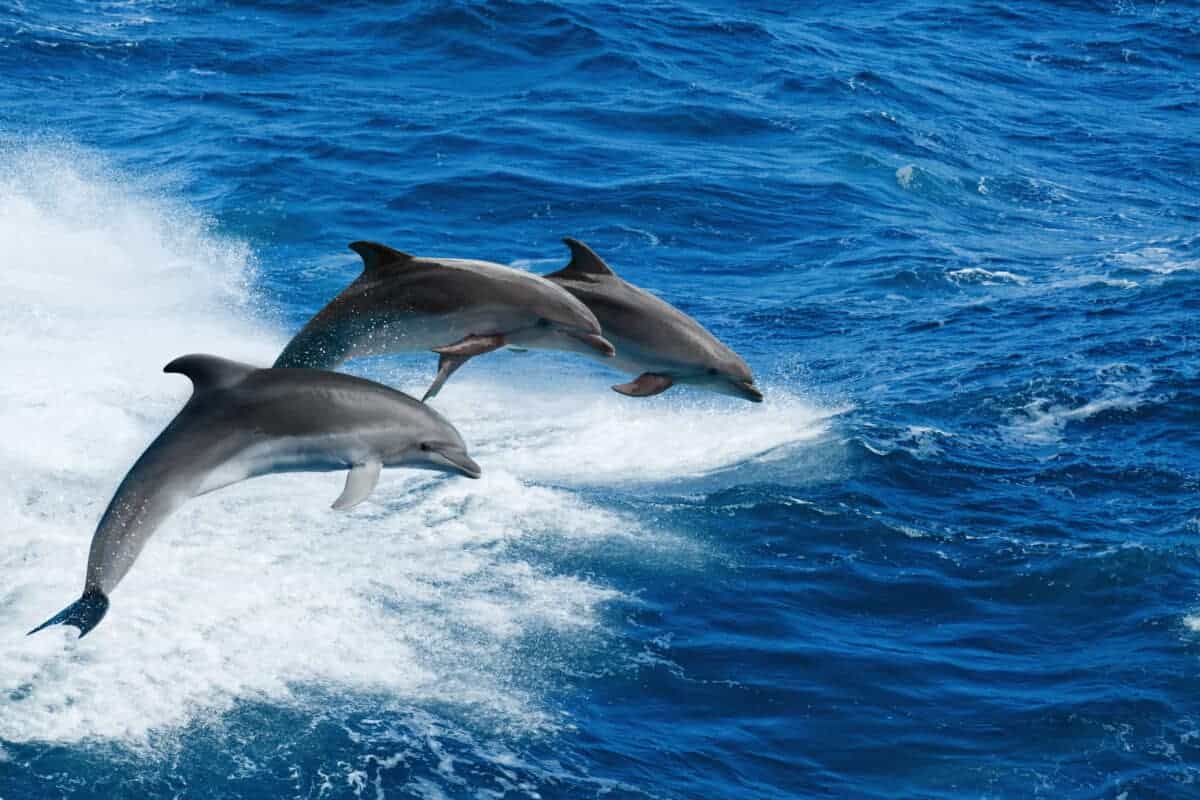
One of the most sophisticated aspects of dolphin behavior is their use of individualized “signature whistles”—unique vocal patterns that function similarly to human names. Each dolphin develops its own distinctive whistle within the first year of life, which serves as a personal identifier throughout its lifetime. Dr. Vincent Janik of the University of St. Andrews has conducted pioneering research demonstrating that dolphins can recognize the signature whistles of specific individuals even after 20 years of separation, suggesting an exceptional long-term social memory. When separated from their pod members, dolphins will repeatedly broadcast their signature whistle as a form of contact call.
What makes this system particularly remarkable is that dolphins not only recognize each other’s whistles but can also mimic the signature whistles of absent individuals—effectively “calling their name” to initiate contact. This represents a level of vocal learning and referential communication previously thought to exist only in humans. Studies using underwater speakers playing recorded signature whistles show that dolphins will consistently turn toward the speaker when they hear the whistle of a familiar individual. This sophisticated communication system supports the complex social networks dolphins maintain, allowing them to coordinate activities and maintain relationships despite the three-dimensional, visually limited ocean environment where individuals may frequently move beyond visual range of each other.
7. Cooperative Hunting Strategic Team Predation

Dolphin cooperative hunting behaviors showcase some of the most sophisticated coordinated actions observed in any non-human species. In one remarkable strategy documented in Florida and South Carolina, bottlenose dolphins work together to create what biologists call a “mud ring” technique. A lead dolphin swims in a circle around a school of fish, flapping its tail forcefully against the muddy bottom. This creates a ring of suspended sediment that acts as a visible barrier, confining the fish. The panicked fish attempt to escape by jumping over this mud barrier, directly into the waiting mouths of other dolphins strategically positioned around the ring’s perimeter.
In other regions, dolphins demonstrate equally impressive hunting coordination. In Brazil, researchers have documented dolphins herding fish toward human fishermen who cast nets based on subtle cues from the dolphins. After the nets are cast, the dolphins catch disoriented fish that scatter from the nets. Marine biologist Dr. Fabio Daura-Jorge has shown that this human-dolphin cooperation is culturally transmitted, with specific dolphin families maintaining this tradition across generations. In the open ocean, dolphins coordinate to herd schools of fish into tight “bait balls,” taking turns swimming through to feed while others maintain the formation. These varied hunting strategies demonstrate dolphins’ ability to develop regionally specific cultural hunting techniques, coordinate roles among individuals, and maintain these complex behaviors through social learning—cognitive achievements that parallel those of hunting societies in higher primates.
6. Sleep Swimming Unihemispheric Rest

Unlike humans, dolphins cannot afford to become fully unconscious when sleeping—doing so would cause them to drown, as breathing remains a voluntary action for these marine mammals. Marine biologists have discovered that dolphins have evolved a fascinating solution: unihemispheric slow-wave sleep (USWS). During this state, one brain hemisphere remains active while the other enters a sleep state. The active hemisphere keeps the dolphin swimming in a regular pattern and coordinates regular surfacing to breathe, while the other hemisphere receives the restorative benefits of sleep.
Research led by Dr. Lori Marino has shown that dolphins alternate which hemisphere sleeps, ensuring both sides of the brain receive adequate rest. During this semi-conscious state, dolphins often swim slowly in circular patterns or close to the surface, maintaining just enough momentum to periodically rise for breath. Perhaps most remarkably, the eye opposite the sleeping hemisphere typically closes, while the eye connected to the alert hemisphere remains open, monitoring the environment for potential threats. Mother dolphins with young calves have been observed to reduce their sleep periods significantly during the first few weeks after birth, maintaining higher vigilance to protect their vulnerable offspring. This adaptation represents one of the most unusual sleep behaviors in the animal kingdom and demonstrates the evolutionary solutions that arose when air-breathing mammals returned to aquatic environments.
5. Pod Surfing Riding Ocean Energy
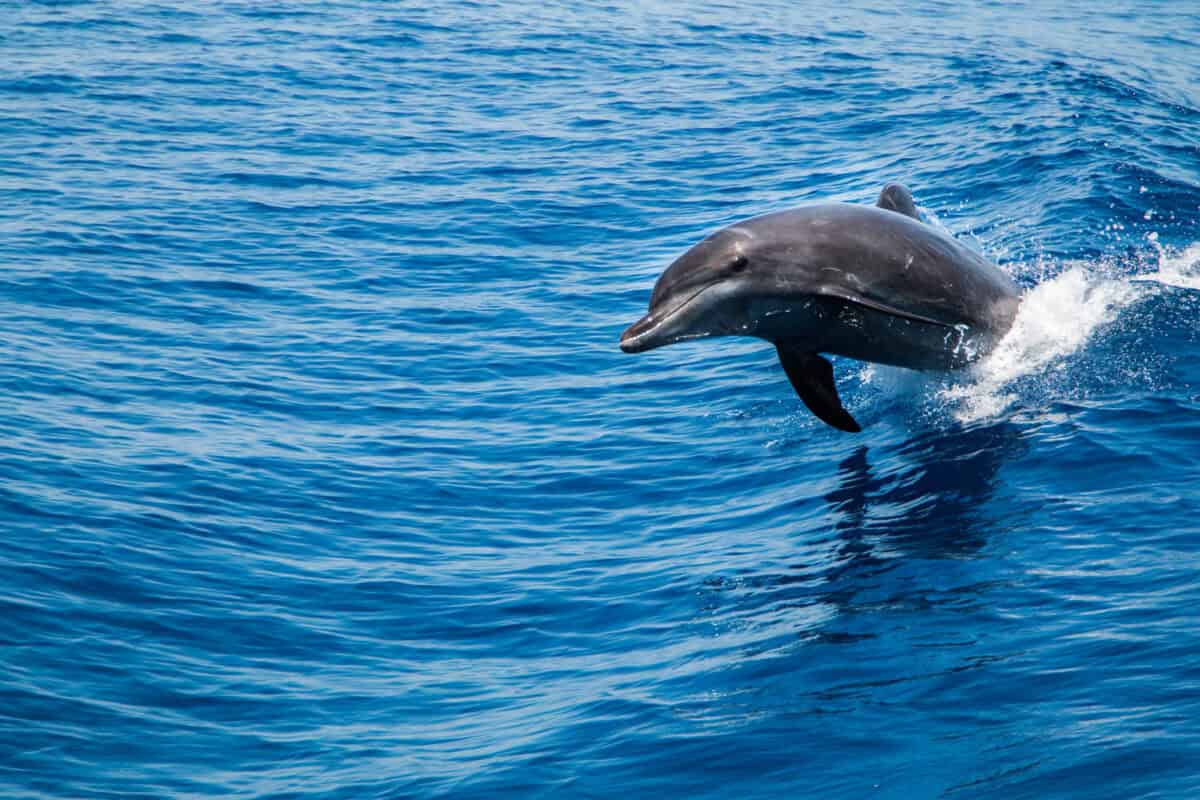
When dolphins ride the bow waves of ships or surf on ocean swells, they’re engaging in more than just playful behavior. Marine biologists have determined that this activity, known as “bow-riding” or “wave-riding,” serves multiple adaptive functions. By positioning themselves in the pressure wave created by a moving vessel or natural wave, dolphins can travel at high speeds with minimal energy expenditure. Dr. Frank Fish (aptly named for his research on marine locomotion) has calculated that dolphins riding pressure waves reduce their metabolic energy costs by up to 70% compared to swimming at the same speed under their own power.
Beyond energy conservation, wave-riding serves social and developmental functions. Juvenile dolphins use this behavior to practice and refine their swimming skills, developing the coordination and timing needed for efficient movement. The behavior is also frequently observed during social play sessions, with multiple dolphins taking turns riding waves and engaging in aerial displays upon leaving the wave’s energy. Researchers have noted increased rates of social contact and synchronized swimming following group surfing sessions, suggesting the activity may strengthen social bonds. Some populations, like the dolphins of Kaikoura, New Zealand, have become particularly specialized in wave-riding techniques, developing cultural variations in how they approach and utilize breaking waves—another example of how dolphins develop regional behavioral traditions.
4. Beaching Behavior Intentional Stranding for Hunting
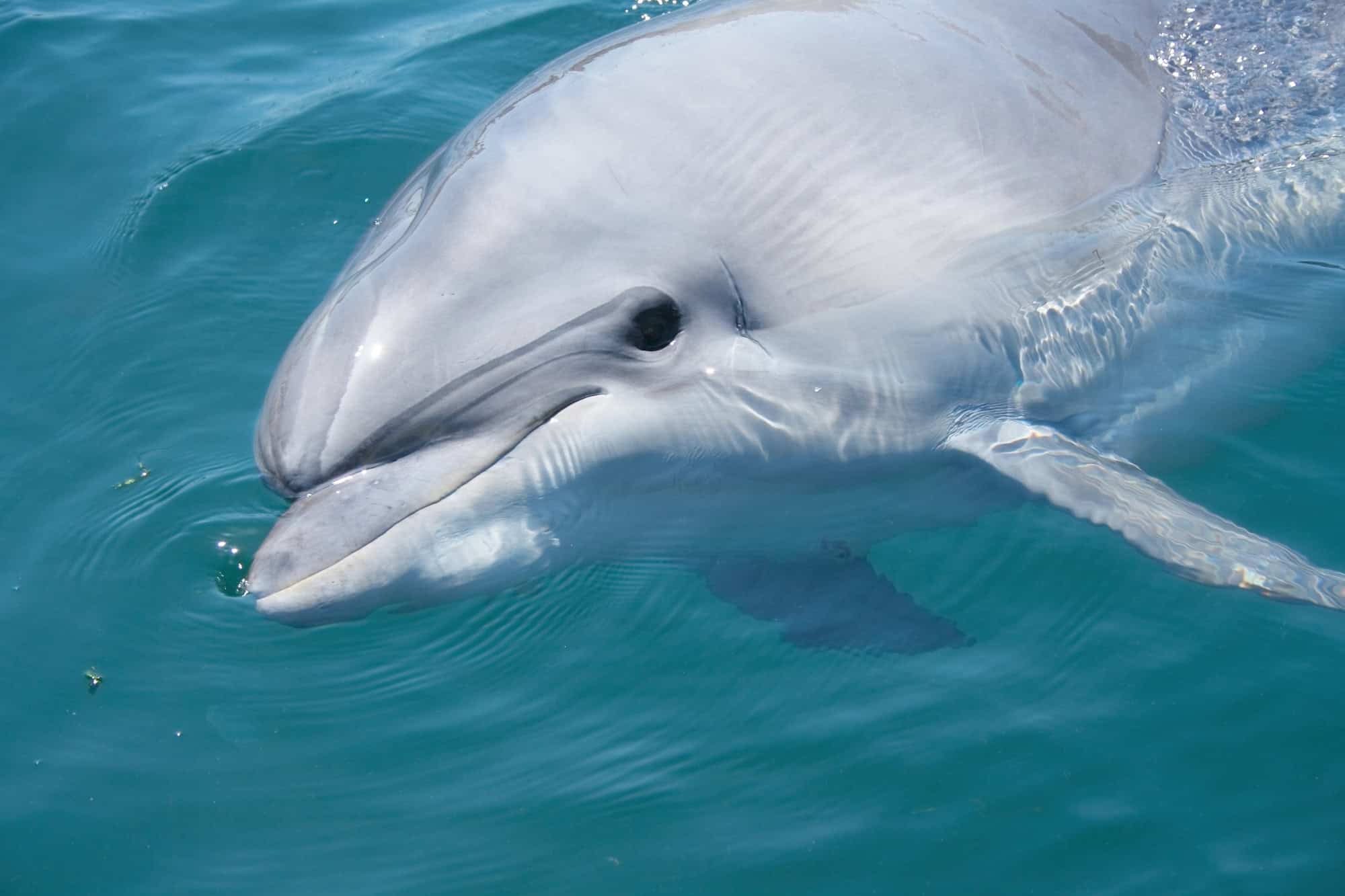
One of the most dramatic dolphin hunting behaviors occurs in locations like the shallow tidal zones of Argentina’s Peninsula Valdés, where killer whales (technically the largest species of dolphin) intentionally strand themselves on beaches to capture sea lions and elephant seals. This high-risk hunting strategy involves dolphins charging at high speed toward shore, timing their approach with incoming waves to beach themselves partially or completely on the shore. After capturing prey with their teeth, they wiggle and rock their bodies to return to deeper water with the next wave. Marine biologist Dr. Robert Pitman has documented that this knowledge is passed down through generations, with adult whales teaching juveniles the precise techniques through years of observation and supervised practice.
A similar but distinct beaching hunting strategy has been documented among bottlenose dolphins in salt marshes of South Carolina and Georgia. In a behavior known as “strand feeding,” these dolphins herd fish onto sloping mudbanks during low tide, then temporarily beach themselves to capture the stranded fish before sliding back into the water. Research by Dr. Rachel Rounds has shown that only certain dolphins within a population develop this specialized technique, and they tend to hunt together in coordinated groups of 2-6 individuals who have compatible hunting styles. The behavior requires precise timing, environmental knowledge, and physical control—a dolphin that beaches too far or fails to return to water quickly risks overheating or suffocation. These intentional stranding behaviors demonstrate the extraordinary behavioral flexibility and risk assessment capabilities of dolphins, who have adapted their hunting techniques to exploit specific ecological niches.
3. Altruistic Behavior Helping Injured Pod Members
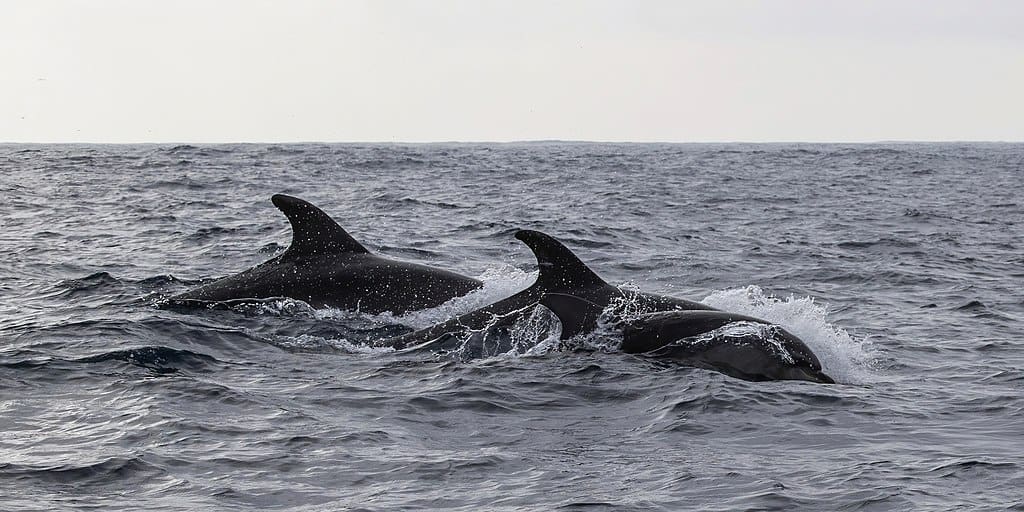
Among the most touching dolphin behaviors documented by marine biologists is their tendency to provide care and support to injured or distressed pod members. Numerous observations have recorded dolphins physically supporting sick or injured companions at the surface to help them breathe, sometimes continuing this assistance for days without rest. Dr. Karen McComb’s research team documented a case where a group of Indo-Pacific bottlenose dolphins formed a raft-like formation beneath an injured juvenile, taking turns supporting it at the surface for over a week until it recovered enough to swim independently. This supportive behavior often involves multiple pod members working in coordinated shifts.
This altruistic behavior extends beyond physical support. Dolphins have been observed bringing food to injured pod members unable to hunt effectively and positioning themselves between vulnerable individuals and potential threats like sharks. In one remarkable case documented by researchers in Japan, dolphins were observed bringing human divers to the aid of an injured pod member caught in a fishing net, seemingly understanding that humans could provide assistance. While evolutionary biologists note that helping related individuals provides indirect genetic benefits (known as kin selection), dolphins frequently assist unrelated pod members as well. Dr. Maddalena Bearzi’s long-term studies suggest that dolphin altruism may be based on strong social bonds and reciprocal relationships developed over years of association, representing a sophisticated social morality that parallels aspects of human ethical behavior.
2. Object Play Cognitive Enrichment Through Manipulation

Dolphins engage in elaborate object play, carrying, tossing, and exchanging items like seaweed, sticks, feathers, and even unfortunate small marine creatures like pufferfish. Far from random, marine biologists have documented that this play behavior serves important cognitive and social functions. Dr. Marah Hardt’s research has shown that juvenile dolphins use object play to develop fine motor control of their mouths and bodies, practicing manipulations that will later be crucial for hunting and mating success. Through play, they learn precisely how much force to apply when handling different objects—a skill that translates to more effective prey handling and reduced risk of injury when capturing spiny or venomous prey.
Object play also features prominently in dolphin social interactions. Researchers have observed dolphins using objects as gifts during courtship, with males presenting particularly rare or colorful items to females they’re pursuing. Within juvenile social groups, objects become the centerpiece of games resembling “keep away,” where possession of the item transfers between dolphins according to apparent social rules. Studies conducted at several marine research facilities have demonstrated that dolphins remember specific objects they’ve played with previously and show preferences for certain items over others. Intriguingly, different dolphin populations develop cultural preferences for specific play objects—dolphins in Australia’s Shark Bay show a particular preference for playing with sponges, while a population in Florida commonly plays with floating mangrove seedpods. These regional “toy preferences” represent another example of culturally transmitted traditions among dolphin societies.
1. Mourning Behavior Grief Responses to Death

Marine biologists have documented numerous cases of what appears to be mourning behavior in dolphins, suggesting these animals experience grief in response to the death of pod members—particularly offspring or close social partners. In multiple observed instances, mother dolphins have carried dead calves for days or even weeks, repeatedly bringing them to the surface in what looks like attempts to help them breathe. Dr. Giovanni Bearzi, who has studied this behavior extensively, notes that these mothers often exhibit signs of extreme physiological stress and reduced feeding during this period, indicating significant emotional distress.
Beyond maternal grief, dolphins have been observed engaging in what researchers term “standing vigils” around deceased pod members. Multiple scientific reports describe groups of dolphins circling a dead companion for hours, vocalizing frequently, and preventing the body from drifting away or being scavenged. In several documented cases, adult dolphins have supported a deceased juvenile at the surface in groups, similar to how they would assist an injured but living dolphin. While scientists caution against excessive anthropomorphization, the neurobiological evidence supports the capacity for grief in dolphins. They possess von Economo neurons and spindle cells in their brains—specialized cells associated with emotional processing and social awareness in humans—in densities comparable to those found in great apes. This neurological evidence, combined with the consistent behavioral observations.
Conclusion:
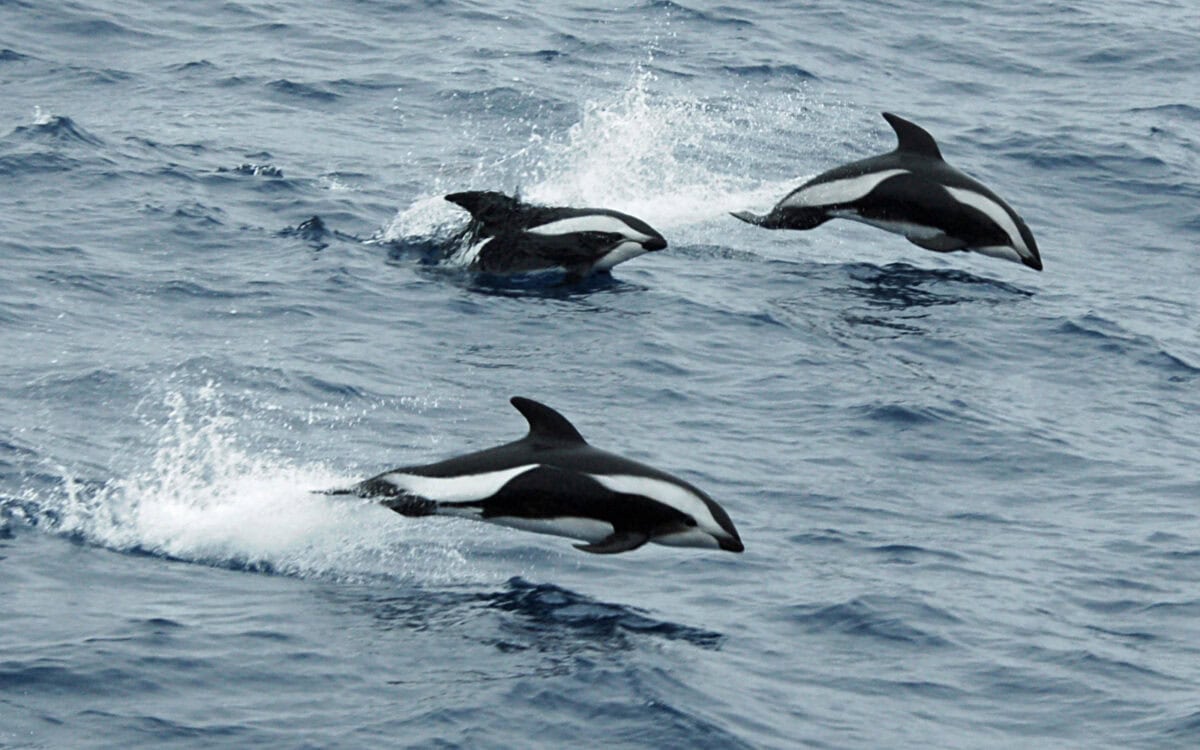
Dolphins are some of the most intelligent and socially complex animals in the ocean, and the behaviors explored by marine biologists reveal just how remarkable they truly are. From echolocation and synchronized swimming to tool use and vocal mimicry, dolphins display a wide range of actions that highlight their advanced cognitive abilities, strong social bonds, and adaptability. Each behavior tells a story about how dolphins interact with one another, navigate their environment, and even build relationships with humans.
Understanding these 13 behaviors not only deepens our appreciation for dolphins but also underscores the importance of protecting their habitats. As science continues to uncover the secrets of dolphin communication, cooperation, and emotional intelligence, we’re reminded of how much we still have to learn from these graceful marine mammals. Their behaviors are more than just fascinating—they’re a window into the rich inner lives of creatures that share our planet’s oceans.
- Do Tarantulas Shoot Venomous Hairs at Their Enemies Here is the Real Story - August 23, 2025
- Why Some Animals Can Regenerate Their Entire Bodies - August 23, 2025
- 10 Animals That Shaped Human Evolution - August 23, 2025

